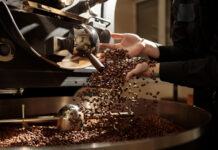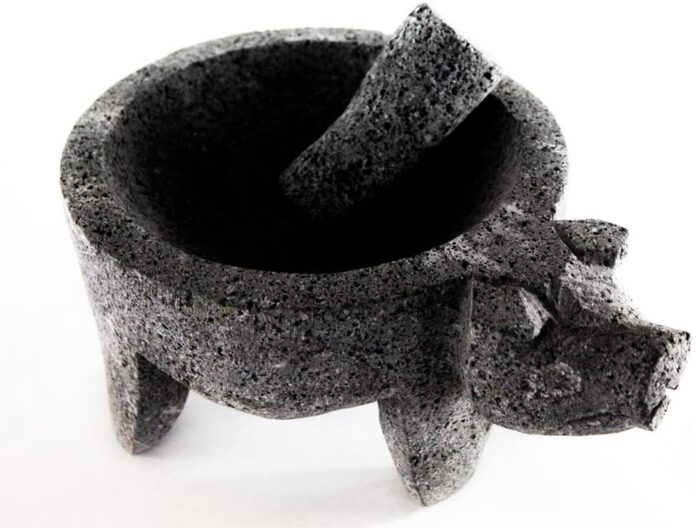
Modern Mexican and Tex-Mex restaurants like Taco Bell don’t have molcajetes, a type of mortar and pestle kitchen tool because these aren’t as easy and convenient to use as modern food processors and blenders. But for a deeper appreciation of the love and attention that traditional Mexican food required, it’s essential to understand the molcajete.
What Is a Molcajete?
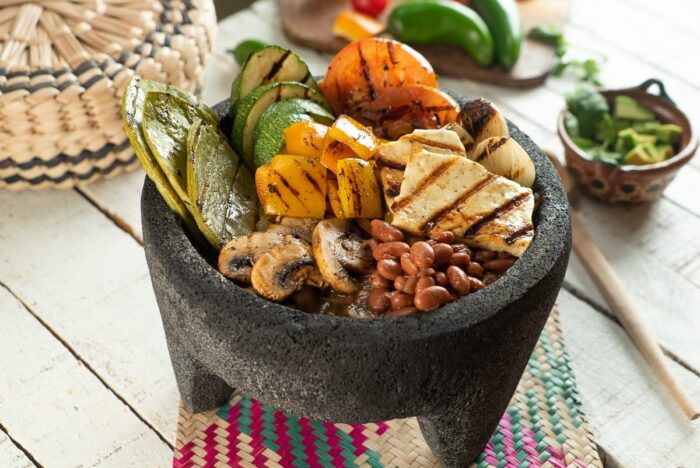
Essentially, a molcajete is a large mortar and pestle that acts like a food processor or blender. Made from volcanic stone, it’s made of two parts: first, a base or mortar known as the molcajete and second, the grinder or pestle known as the mano. If you’ve been using a mortar and pestle in your modern kitchen, you will easily determine how it’s used and what it can be used for.
Indeed, Mexicans consider the molcajete as a vital kitchen tool without which they cannot make salsas and other dishes. In the United States, you can find it in Hispanic stores, online shops, and specialty stores. You can even have one made especially for your kitchen.
Despite a long menu that you can view here, Taco Bell and other Tex-Mex restaurants still do not need to use a Molcajete because most of their guacamole is prepared on a large scale in some food processing warehouse.
What Are the Benefits of Using It?
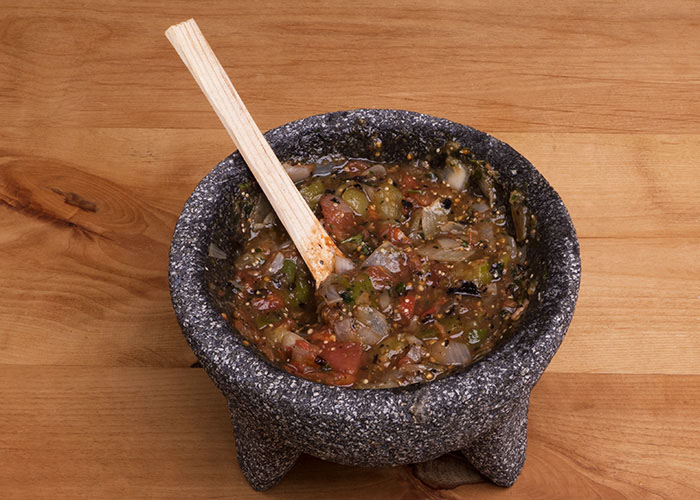
You may also just skip the use of a molcajete altogether because food processors are more convenient. But there’s something good to be said about using a molcajete.
If you’re looking for more depth of flavor, your best bet is to use a molcajete. Its grinding action extracts the essential oils in the ingredients that, in turn, adds for subtle flavors to the salsa or whatever it is being made.
In contrast, food processors and blenders finely chop the ingredients but don’t contribute to the release of their essential oils. This means the lesser depth of flavor, not to mention a different texture from ingredients ground in a molcajete.
But this isn’t to say that using a food processor or blender in preparing Mexican dishes, as is the case in many modern Mexican restaurants, is a blasphemy! If you use a molcajete, you will get more flavor from the food but you will also spend more time on grinding and cleaning up. But if you use a food processor, you don’t have to spend much time and effort into the job but you’re less likely to end up with a depth of flavor.
How Do You Use It?
First off, take note that while a molcajete is simple to use, it requires more time and effort to get the job done. You may not want to give the extra time and effort but if you do, chances are these are worth it.
A few tips when using a molcajete for the first time:
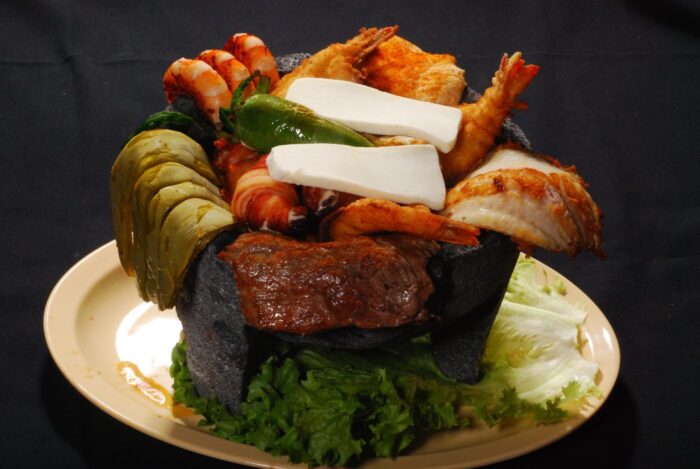
- Chop the ingredients before grinding them in a molcajete. You will have an easier time grinding vegetables and spices when these are smaller and finer. For a smoother mash, you should chop the ingredients as small as your patience allows it.
- Grind the chopped ingredients in small batches. You should start with just a tablespoon or two of the ingredients and then add as needed. Add a small batch to the mashed ingredients so it’s easier to grind. Only add more if the present batch has the desired consistency and texture before adding another one.
- Use a twisting motion to break down and grind the ingredients. It takes practice to master the movement so keep at it. You should be able to get it after a few tries.
But don’t use a brand-new molcajete without curing it first! In the molcajete’s case, curing involves the following steps:
- Add a couple of tablespoons of either dry white rice or rock salt into the molcajete.
- Using the pestle, grind the rice or salt until it’s as fine as powder. The grinding motion will turn the rice or salt a gray color since it picks up the grit from the molcajete’s surface.
- Discard the ground rice or salt with the grit in it.
- Place another couple of tablespoons of rice or salt on the molcajete and grind it again.
- Discard the second batch of ground rice or salt again.
- Rinse the molcajete and mano under running tap water.
You can now use your cured molcajete! You may want to start with making a simple salsa and then learn from there. You can also watch instructional videos on the proper use of the molcajete and its mano.
As for its cleaning, a molcajete should be fairly easy to clean. First, remove the remnants of the ingredients on the molcajete’s surface using a spoon. Rinse the molcajete under hot running water, which will make it easier to remove stubborn food scraps and disinfect it.
If there are tiny food bits stuck to the molcajete, you can use a kitchen brush to remove them. Then, place a few drops of dishwashing liquid on its surface, scrub its surface with a kitchen brush, and rinse with hot water. Pat dry with a clean kitchen towel before allowing it to air dry.



